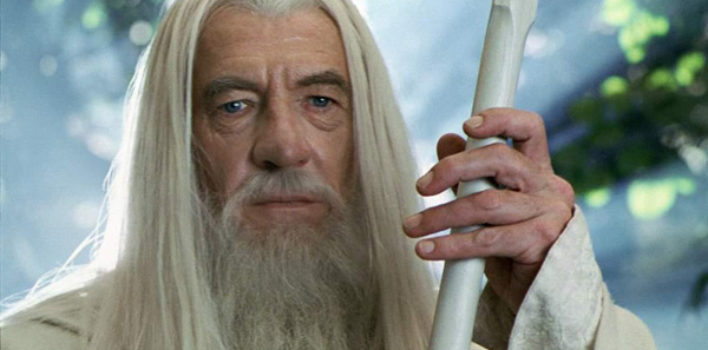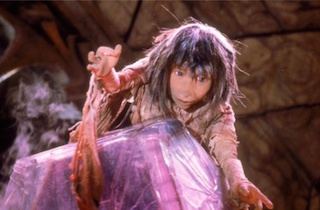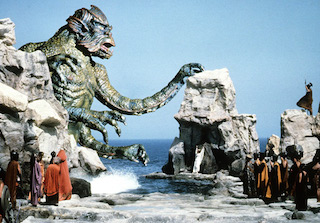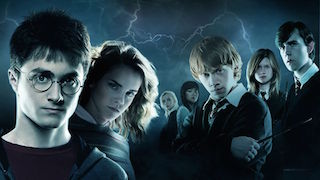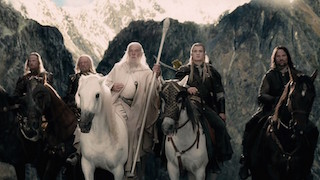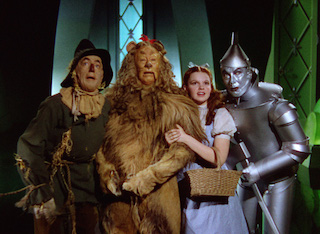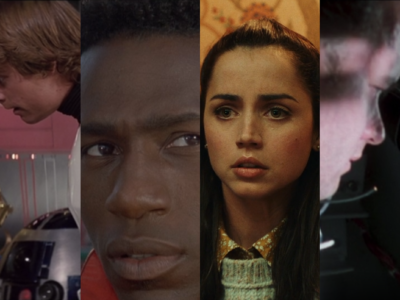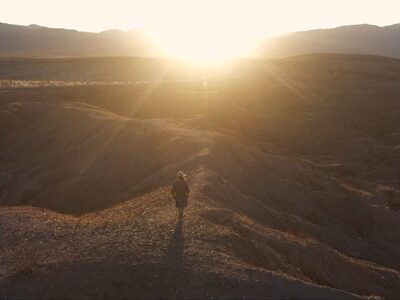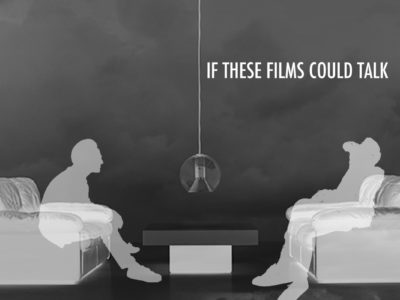Top 5 High Fantasy Movies
With Duncan Jones’ Warcraft movie coming to theaters this weekend, it’s the first real High Fantasy genre movie to come out since 2014’s trio of Maleficent, Seventh Son, and The Hobbit: The Battle of the Five Armies. Filled with magical creatures, heroic characters, and set in a world nothing like our own where it is bigger than one story. In many instances, the movies are based on novels or a series of novels that have built up a mythical world, e.g. The Hobbit or Harry Potter. Warcraft shares with these movies a decades-old lore of its own built around the more well-known video games and lesser-known card game, novels, and comics.
On the cusp of the franchise’s first foray onto the big screen, it seems fitting to look back on the best of the High Fantasy genre. Initially contained mostly to novels and cartoon shows, the genre exploded in the 1980’s with a slew of fantasy movies ranging from the creative team of Jim Henson, as well as visionaries like Terry Gillam (Timebandits) and John Milius (Conan the Barbarian). After a slight lull in the 90’s with only a couple movies fitting the genre, it exploded once again in 2001 with the release of Peter Jackson’s The Lord of the Rings: The Fellowship of the Ring. The genre has never looked back and almost every year since has seen a new movie in the genre.
While some of the movies on this list are from these explosive periods, a couple of them defy the normal conventions of the era and one in particular precedes and trumps them all. Check out the Top 5 below and let us know some of your favorite High Fantasy movies.
5) The Dark Crystal
My favorite of the 1980’s Jim Henson high fantasy movies, The Dark Crystal implies in the name exactly what it was going for. Henson, while conceptualizing the story and production elements, wanted a movie going back to the darker stories of the Grimms’ Fairy Tales. He believed much of childhood entertainment was missing something scary and it was unhealthy for children never to be afraid. Henson surely caused many children to have some sleepless nights after The Dark Crystal debuted in 1982.
Relying primarily on the conceptual artistry of Brian Froud to build the world of Thra, much the same way George Lucas relied on Ralph McQuarrie and Joe Johnston, the entirety of Henson’s movies was set in a world unlike our own. Like Star Wars was for Lucas, The Dark Crystal was Henson’s passion project and was his masterpiece. It brimmed with imagination, mythical and philosophical characters and themes, and involved countless artists at the peak of their performance and creativity. While it lacks the same resonance and heroism of the more cultural impactful Star Wars or Lord of the Rings, it brought the very dormant high fantasy genre into live-action for new audiences and proved you could transfer a completely imaginative world, looking nothing like ours, and produce it on the big-screen. It would be the roots of the explosion of high fantasy movies starting in the early 2000’s.
4) Clash of the Titans
Two Hollywood legends: actor Laurence Olivier and visual effects artist Ray Harryhausen, brought their respective craft to this 1981 blockbuster smash adapting the mythical Greek story of Perseus (Harry Hamlin) and his epic quest to rescue Princess Andromeda (Judi Bowker). Harryhausen, with some his most memorable and fantastic creations, dominates the movie as his stop-motion visual effects of Perseus’ famous mount, Pegasus, the sinister Gorgon, Medusa, and the last of the titans, the monstrous Kraken. Olivier brought his clout as a famous actor as Zeus, popping in and out of the movie to help his demi-god son Perseus, much the same way Marlon Brando was doing in Richard Donner’s Superman movies.
The world of mythological Greece goes well beyond this one story, and it’s sweeping, epic nature makes it brim with adventure and fantasy. After I saw this as a kid, I borrowed as many books as I could from our school library on Greek myth. Even before The Hobbit, The Lord of the Rings, or the Redwall series of books, Greek myth was my first foray into high fantasy and it started with this classic film.
3) Harry Potter and the Prisoner of Azkaban
I was kind of late to the whole craze around the Harry Potter books. I remember seeing them at the bookstore and hearing about the early books, but it never piqued my interest until the movies started coming out in 2001. I didn’t even give a thought to reading the books until the third movie adaptation, Harry Potter and the Prisoner of Azkaban, came out in 2004. Once I read the books, this was both my favorite book and favorite movie of the bunch.
This film is the first to dive deeper into Harry’s origins and the history of both his father and mother and we start to get a bigger history of the world of wizards. Both David Thewlis as new Defense Against the Dark Arts teacher Professor Lupin and Gary Oldman as escaped criminal Sirius Black are the first really great additions to the movie’s universe and to Harry’s history. And while some do not like the time-travelling element in the final third, I loved how the jumping around in time added curiosity and fun. Of course, there are also the Dementors, which add a darker element to the movies and, as Prison Mike taught us, are the worst part about prison. While further movies would begin to expand the world with things like the Quidditch World Cup, Death Eaters, and the Ministry of Magic, The Prisoner of Azkaban started us on a journey to know and really care about “the boy who lived.”
2) The Lord of the Rings: The Two Towers
The highest of the high fantasy, J.R.R. Tolkien’s three-novel magnum opus was built on decades of research, backstory, and creative wizardry. It would take an equally passionate and dedicated filmmaker to bring Tolkien’s world to life and such a person was found in auteur director Peter Jackson. Truly his passion project, the world of Tolkien has taken up 12 years of his filmmaking life if you include the three The Hobbit movies. Starting in 1997, Jackson and long-time story collaborator Christian Rivers began storyboarding for the movie and Weta Workshop, under the guidance of founder Richard Taylor, began to visualize the world of Middle Earth. Three movies and seven years later, Jackson and his team would find themselves on-stage at the 2004 Academy Awards accepting the Best Picture Oscar for The Lord the Rings: The Return of The King. It is the only movie categorized as High Fantasy ever to win the Best Picture award.
The much-deserved accolades for Jackson and Weta Workshop seem better suited, however, to go along with the best movie of the trilogy, The Two Towers. As discussed on Reel World Rewind’s episode about The Two Towers, this takes many of Tolkien’s greatest thematic and narrative elements and combines them into a fast-paced, unrelenting journey from the aftermath of Boromir’s death to the gates of Mordor. I would suggest, for the sake of brevity, to listen to our half-hour discussion of the movie to get an idea of why this movie is better than it’s predecessor and Oscar-winning successor. For now, know all three movies are incredibly good and the genre of high fantasy owes it’s present ubiquity to Jackson’s toil and passion for Tolkien’s Middle Earth.
1) The Wizard of Oz
Before modern effects, before CGI, and fifteen years before J.R.R. Tolkien even published The Fellowship of the Ring, true Hollywood magic was made in 1939. Adapted into a movie from L. Frank Baum’s wildly popular American fairy tale, The Wonderful Wizard of Oz, it was truly a large-scale studio production by MGM involving multiple scriptwriters, producers, and short stints by two directors before settling on Victor Fleming. It debuted to massive rave reviews from critics and audiences and was nominated for six Academy awards, including Best Picture, but lost to a little movie you may have heard of called Gone With The Wind. It holds a special place in my heart as a childhood favorite and as a historical entity; the movie debuted on August 11th and August 12th in two different Wisconsin cities located close to my hometown.
While MGM made the change to have the fantastical elements of the movie appear as a dream sequence experienced by Dorothy, citing their “modern-day, sophisticated audiences”, the movie largely follow’s Baum’s fantastical original fairy tale. Truly a movie of great imagination and wonderment, it is one of the all-time great films, has a massive cultural impact, and has inspired countless fantasy films across multiple genres. IT cannot be proven Tolkien was influenced by Baum’s novels and MGM’s movie since it was never explicitly stated by Tolkien, but the movie’s narrative and production design clearly influenced Jackson’s imagining of Middle Earth. What many would cite as the greatest of high fantasy movies owes some of its influence and viability to one of the greatest American Hollywood movies of all-time.


